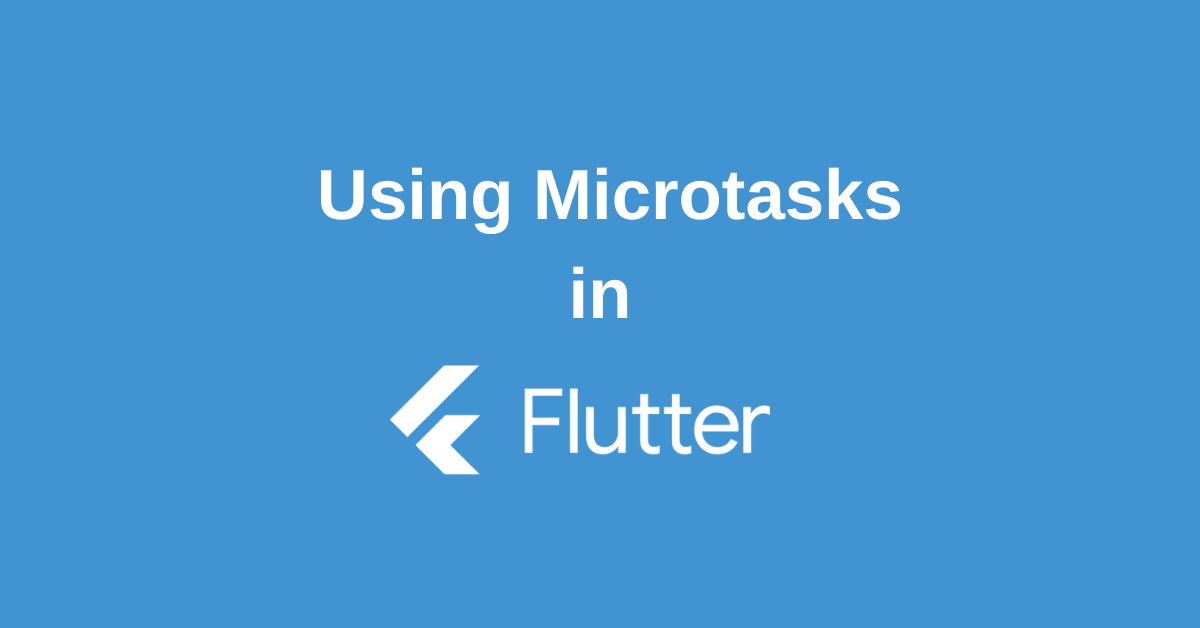Flutter, Google’s UI toolkit for building cross-platform mobile apps, offers a powerful and efficient way to develop visually appealing applications. To achieve optimal performance in Flutter, understanding and effectively utilizing microtasks is crucial. Microtasks, a fundamental concept in Dart’s asynchronous programming model, play a significant role in managing tasks and ensuring smooth user experiences. In this blog post, we’ll delve into the intricacies of Flutter Microtasks, exploring their purpose, behavior, and best practices for leveraging them to optimize your Flutter app’s performance.
Flutter Microtasks: Understanding the Basics
Flutter’s expansive ecosystem empowers developers to meet evolving demands. A cornerstone of this is the event queue, which manages various tasks, including microtasks. These smaller, discrete units of work allow for more granular control over task execution. Microtasks coexist harmoniously with regular tasks within the event loop, yet they have distinct characteristics.
Microtasks reside in the microtask queue, a specialized part of the event loop. This mechanism ensures a smooth balance between user interaction and efficient code execution. Microtasks are particularly valuable for managing asynchronous code, contributing to improved asynchronous programming practices in your Flutter applications.
Under the Hood: The Microtask Loop
By skillfully manipulating the event queues (one for events, one for microtasks) in your Dart code, you can significantly boost your app’s performance and responsiveness. The event loop iteratively checks if the microtask queue is empty. If not, it prioritizes processing microtasks before handling other events.
The event loop not only manages typical tasks like mouse events but also efficiently handles microtasks. Understanding this interplay is essential when writing asynchronous Dart code.
Imagine processing a network response, which might involve several small computational steps. Each step can be treated as a microtask, a smaller, faster task compared to regular ones. Microtasks enjoy priority when the next event is a microtask, hence the name ‘microtask queue.
Importance of Flutter Microtasks: Performance and Beyond
How do microtasks contribute to performance? The key lies in effectively managing asynchronous programming. For external events like mouse clicks, use an event-handling approach. For short internal actions, employ microtasks.
When a future completes, its callback is placed in the microtask queue, ensuring timely execution. This scheduling approach helps Flutter deliver exceptional performance.
Handling asynchronous code with microtasks reduces the risk of missed events or inconsistent states. A well-organized microtask queue leads to a smoother event cycle and better asynchronous code.
Scheduling Microtasks in Flutter: An Insight
Dart’s extensive library offers various functions to simplify development tasks. One such function, scheduleMicrotask() from the dart:async library, allows you to create and schedule a new microtask event in the queue.
Here’s a simple example of scheduling a new microtask:
void main() {
print('Hello from main function');
scheduleMicrotask(() { //Scheduling a new microtask
print('Hello from Microtask');
});
print('Hello again from main function');
}In this sample code, you will notice that the scheduled microtask executes after the ‘main’ function and before the next event on the event queue. This implies that the microtask queue has higher priority than the other tasks pending in the event queue.
Dissecting Flutter Microtask with Code: Practical Examples
While theoretical knowledge is essential, practical application is key. Let’s explore real-world examples of Flutter microtasks in action.
Imagine a Future class that may not immediately yield a non-future value:
//Sample code for Future Value
void main(){
print('Start');
Future(() {
print('Running Future');
});
print('End');
}
Running this script calls ‘print’ such that it logs ‘Start’, then ‘End’, and finally ‘Running Future’. In these operation sequences, the event loop starts, moreover, the Future’s function execute synchronously, pushing all its calls to the event queue, postponing them until the current function completes.
Now, let’s replace the Future function with scheduleMicrotask:
// Sample code for Microtask
void main() {
print('Start');
scheduleMicrotask(() { //Schedule Microtask
print('Microtask is running');
});
print('End');
}Unlike in the previous example, print logs ‘Start’, then ‘Microtask is running’, and finally ‘End’. This change in execution sequence illustrates the higher priority of microtasks.
In conclusion, microtasks deliver better control over your code execution and they are highly helpful when dealing with asynchronous programming.
Conclusion
Microtasks are a fundamental aspect of asynchronous programming in Flutter, and mastering their usage is essential for building high-performance applications. By understanding their purpose, behavior, and best practices, you can effectively manage tasks, avoid blocking the UI thread, and ensure a smooth and responsive user experience. By incorporating microtasks into your Flutter development workflow, you can create applications that delight users and stand out in today’s competitive mobile app market.

